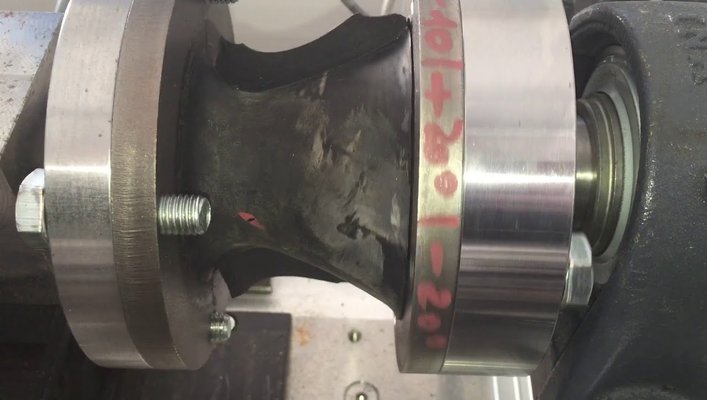An essential test for the determination of nonlinear stress-strain relationships is the uniaxial test. Strain is applied along a characteristic dimension, whereby necking in the two transverse directions is not restricted. The strain is recorded optically and the test can be controlled according to the following control variables:
- displacement
- force
- stretching
- stretching speed
- stress (for incompressible media)
Furthermore, this test can be carried out in the temperature chamber, thus the properties can also be recorded at different temperature levels.
In addition to the uniaxial test, the equibiaxial test is particularly necessary in order to calibrate elastomer models. This test differs in such a way that a flat specimen is stretched in two main directions and the deformation is not restricted in the normal direction. Again, the test can be controlled according to the following quantities:
- displacement
- force
- stretching
- stretching speed
- stress (for incompressible media)
This experiment can also be performed in the temperature chamber at defined conditions.
For the application of damage hypotheses in numerical simulation it is necessary to perform Wöhler tests. Our company carries out the necessary tests to determine Haigh diagrams in our in-house laboratory. For simple damage procedures, uniaxial fatigue tests are usually carried out to determine the Wöhler lines and their slopes. Test control can be carried out according to the following quantities:
- force
- displacement
- stress (for incompressible media)
Furthermore, multiaxial tests with up to three axes are carried out for the validation of more complex damage models (arbitrary stress and strain conditions).
The stress situation in elastomer components is usually much more complex than in the uniaxial case, which is why our company has developed its own multiaxial test rigs with which Wöhler tests can be carried out under multi-axial stress and strain conditions. This provides the basis for the application and validation of new damage hypotheses.
By using these damage models, the real loading situation and the local damage accumulation can be mapped in a higher level of detail and calculated with significantly higher prognosis quality.






